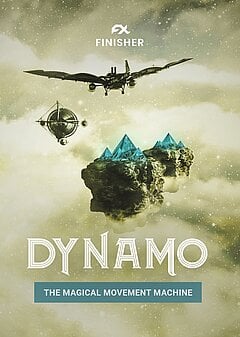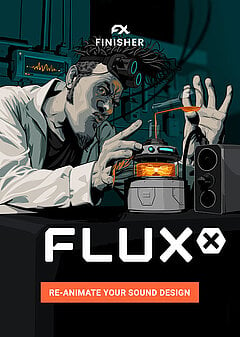How to Spice Up Stock Samples with Finishers
Simple processing techniques you can use to breathe life into even the most boring samples to your liking in moments
MARCH 31ST, 2023
So you’ve found some samples you like, downloaded them from Splice and added them to your collection — what next? Do you drop them into your DAW session as-is and use them to help fill out your song? There’s certainly nothing wrong with that ... but we can do so much more. In a perfect world, each sample can become unrecognizable from the original version, allowing you to eliminate similarities with other artists using the same samples! You can process them in tons of different ways, so let’s cover a few.
First though, let’s quickly talk about what to look for when you're picking samples to process. If your intention is to reshape the sound of what you’re processing, you don't need the most complete, polished source material; it's far more important to pick samples with character, whether that involves movement within the sound, complex textures, anything that offers plenty to play with. When looking for sounds, you can use search terms befitting your normal criteria — but use your ear to pick out ones that make you think, “I bet this would sound great if I did _____ to it!”
Turn up the heat
Your mileage may vary depending on the type of music you make, but one of the most satisfying things to do with samples is to completely destroy them. For example, you could use Finisher RETRO for its intended purpose (adding vintage saturation to what you run through it), but you can also turn up the heat and crank the Finisher knob to 100% and cycle through some presets. The strategy doesn't typically pair as well with chordal samples due to the way harmonics are introduced, but FX and percussion are fair game. You can hit snares with the Grunge Amp preset and get a nasty spitting crunch, or kicks with Heartbreak Hotel to turn them into aggressive 808s that you can repitch as needed.
Play around with different distortion modules until you get a sound you like, because various types of distortion introduce different harmonics and offer a new color. What you do from here makes a huge difference though, because tons of distortion makes for a muddy mix. A nice addition to RETRO that you won't find in most normal distortions as a sense of motion, which the preset Ants in the Pants is great for. Distortion brings out the tail of sounds, lengthening and compressing them to give you a base palette, then time-based effects like tremolo and pitch shifting allow you to shape them in a completely new way. You can take this effect even further with Finisher DYNAMO, which is excellent for time-based effects like tremolo and delay!
Go avante garde
Another option is to completely disregard the initial intent behind a sound and make something completely new out of it. This is often much faster than designing sounds from scratch, and with a little creativity you can take a single sound in many different directions. Finisher FLUXX is a great tool for this, packing a ton of different effects into one and giving you an unlimited sonic playground! For example, take the same snare you distorted earlier and smack FLUXX’s Who You Gonna Call preset on it — that snare drum suddenly becomes an ambient layer you can weave into the background and add texture to your music. Or take a kick drum and use the Assembly Line preset to create a sparse, grainy impact to drop into transitions.
It's worth noting that this is a fantastic way to repurpose chordal material; by chopping up the timing and adding spatialization effects, you can create entirely new glitchy chord progressions without doing any manual edits (FLUXX’s Daughter’s Tiktok preset is great for this!). There’s no end to how far you can take this, but if you want quick results, try placing a bunch of different sounds in sequence and seeing how your effect chain reacts to conflicting material — you can get wild combinations based only on how you order your sounds! Next, we’re diving into what you can do with all that material...
Edit ruthlessly
Once you’ve experimented with different effects and created some new sounds you love, the next big opportunity lies in the editing phase. This isn't necessary by any means, but if you have time and enjoy the process, try cutting out small bits from some of them and shaping those with individual volume envelopes — you can make plucks, percussion, glitches or any manner of other sounds this way and even stitch them together into something new. Hunt for particularly interesting bits and delete the rest ... and once you have a good spread of material, then it’s time for the real fun: processing it all again.
The goal here isn’t hitting your new samples with more of the same; you’ll need to change the tonal character of the sound first, and filtering is a great way to do that. Try the Dirty Filter preset in Finisher NEO and you’ll see how quickly filtering can reshape the sound of nearly anything, and the result will be much more accepting of additional distortion and manipulation. Whenever you feel stuck, it’s often a good idea to remove a bit from your sounds before adding more. It gives you room to re-envision the sound and transform it into something new!
Wrapping up
In the hands of a skilled sound designer, virtually any material can be molded into something cool and different. Sometimes the best sounds come from samples that bear zero resemblance to the original; their value in your music comes from the complex processing chains you run them through to get something new ... or of course, you can cut down the time it takes to get there by using Finishers as pre-made multi-effects to change the character of anything you like.
And anytime you contemplate a processing technique and think, “that would never work” ... it could be the start of something great, so don’t shy away from possibilities!
About the Author
Harry Lodes is a copywriter, marketing consultant and content writer for audio and ecommerce brands. He lives in the Philadelphia area, releasing Eastern/Western hybrid EDM under the artist name KAIRI hearkening back to his roots in Berklee College of Music.
Stay up to date
Sign up and we’ll send you an e-mail with product news and helpful stuff every now and then. You may unsubscribe at any time.
Defy Limits
We develop software solutions that enable people to create, consume and interact with music.





